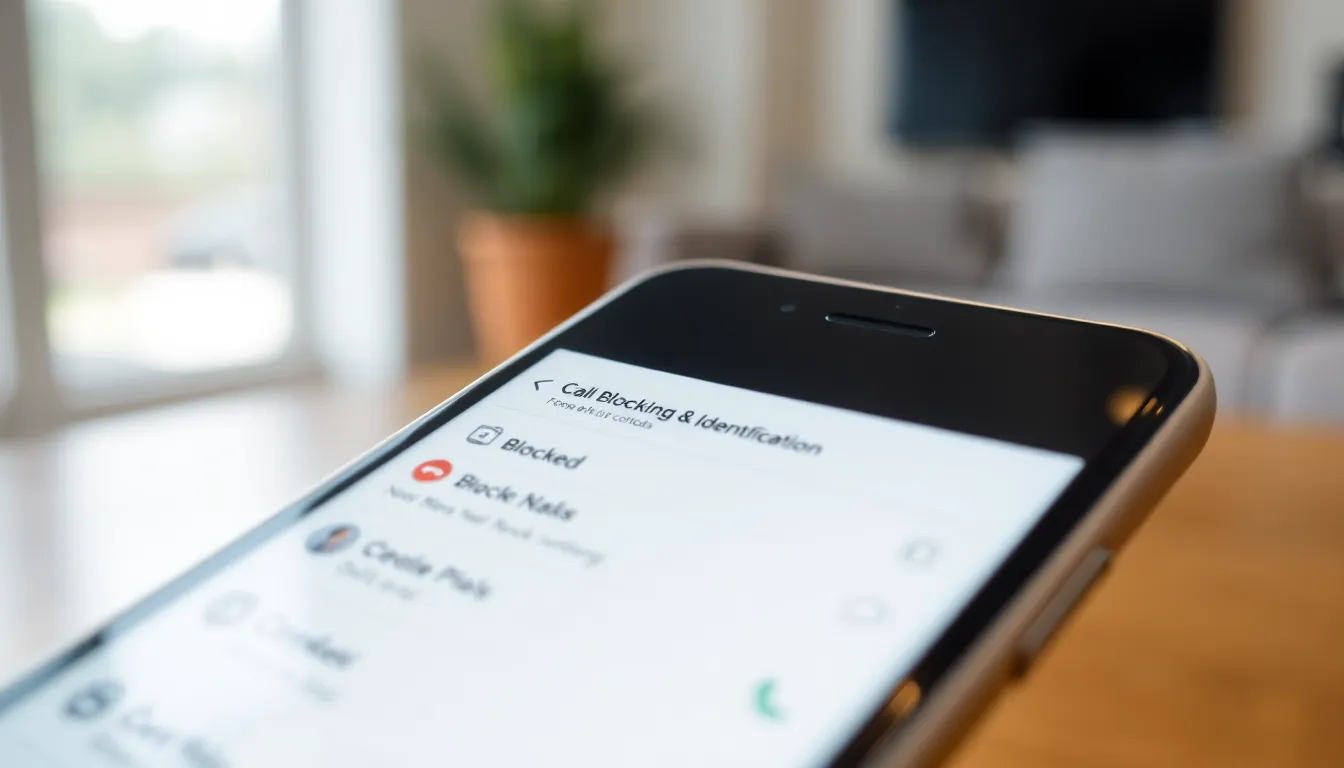Ever found yourself in a texting war with an ex or a pesky telemarketer? It’s easy to block those numbers on your iPhone, but what happens when you want to check who’s been banished to the digital dungeon? Fear not! Finding your blocked numbers is easier than finding a cat video on the internet.
Table of Contents
ToggleUnderstanding Blocked Numbers on iPhone
Blocked numbers on an iPhone allow individuals to control unwanted communications. Users can easily manage these numbers to avoid frustrating calls or messages. Accessing the list of blocked contacts occurs within the phone’s settings.
First, navigate to the “Settings” app to find blocking options. Then, scroll down and select “Phone,” “Messages,” or “FaceTime,” depending on where the blocks apply. Once in the desired section, look for the “Blocked Contacts” or “Blocked” header. This section displays all blocked numbers.
Finding a specific blocked number requires attention, as the list may grow with additional blocks. Users can unblock contacts by tapping “Edit,” selecting the number, and pressing “Unblock.” Unblocking restores the ability to receive communications from that number.
Blocked numbers include various sources, such as telemarketers, unwanted callers, or individuals with whom one prefers not to interact. Keeping this list updated ensures optimal communication management. Regularly reviewing blocked numbers helps maintain control over incoming calls and messages.
It’s essential to know that unblocking a number does not restore past interactions or messages. For quick access, users can add frequently blocked contacts, easing future management. Understanding these features contributes to a seamless iPhone experience.
How to Access Blocked Numbers

Finding blocked numbers on an iPhone is straightforward. Users can check through different apps on their device.
Checking Through Settings
Accessing blocked numbers begins with the “Settings” app. Tap on “Settings” then select “Phone.” Scroll and find “Call Blocking & Identification.” This section lists all blocked contacts. Users can also tap “Messages” and “FaceTime” within the “Settings” for a comprehensive view. Each section displays options to manage blocked contacts effectively. The process remains user-friendly and efficient, ensuring individuals keep unwanted calls and messages under control.
Using the Phone App
Opening the Phone app provides another way to access blocked numbers. Start by tapping “Contacts” at the bottom of the screen. From the list, scroll to find “Blocked Contacts.” This directs users to see numbers that have been blocked. Each entry includes a quick option to unblock contacts if desired. Quick access through the Phone app makes managing blocked numbers simple and intuitive, allowing for easy updates to the blocked list.
Managing Blocked Numbers
Managing blocked numbers on an iPhone allows users to control unwanted communications effectively. Understanding the steps to unblock numbers or add new ones can enhance the user experience.
Unblocking a Number
To unblock a number, start by opening the “Settings” app. Tap on “Phone,” then select “Call Blocking & Identification.” A list of blocked contacts appears. Find the number to unblock and swipe left on it. Then, tap “Unblock.” Users can also unblock numbers through the “Contacts” section in the Phone app. By doing this, individuals can enjoy re-establishing communications without losing any new numbers they might have added since the last block. Unblocking a number won’t restore past calls or messages, so it’s important to know that interactions prior to blocking remain unavailable.
Adding New Numbers to Block
Adding new numbers to block is essential for minimizing unwanted interactions. Open the “Phone” app and navigate to the “Contacts” section. From there, select the contact to block. Tap “Block this Caller” at the bottom of the contact’s information screen. Alternatively, users can directly block numbers through recent calls by tapping the ‘i’ icon next to the number. Choosing to block a number stops any further communication from that source, effectively preventing future disruptions. Keeping the block list updated ensures the iPhone remains a streamlined communication tool, tailored to individual preferences.
Troubleshooting Common Issues
Finding blocked numbers on an iPhone may present some challenges. Users sometimes experience difficulty accessing the list or unblocking numbers. Checking for software updates often resolves unexpected glitches.
Accessing the “Settings” app provides multiple avenues to manage blocked numbers. If the “Phone” or “Messages” sections do not display blocked contacts, restarting the device can refresh the settings. This often corrects minor issues.
When unblocking numbers, ensure the correct process is followed. Opening “Settings,” then tapping “Phone,” and selecting “Call Blocking & Identification” should provide the available blocked contacts. Double-checking each step helps avoid any confusion.
Occasionally, users may not see numbers unblocked properly. Resetting network settings might provide a solution in such cases. Navigating to “Settings,” then “General,” and tapping “Reset” can clear any lingering errors disrupting the unblocking process.
Staying organized with blocked numbers can reduce frustration. Regularly reviewing the list keeps unwanted calls at bay. If certain numbers keep reappearing, considering turning off unknown caller options may also reduce disturbances.
Understanding these troubleshooting methods enhances communication management. Keeping blocked contacts updated streamlines interactions on the iPhone. Familiarity with these processes allows users to minimize unwanted engagements while staying reachable for desired conversations.
Managing blocked numbers on an iPhone is essential for maintaining a positive communication experience. Users can easily access their blocked contacts through the “Settings” app or the Phone app, allowing for efficient management of unwanted calls and messages. Regularly reviewing and updating the blocked list ensures that users can minimize disturbances while still having the ability to reconnect with important contacts when needed. By following the outlined steps and troubleshooting tips, individuals can confidently navigate their iPhone’s blocking features and maintain control over their communication preferences.





